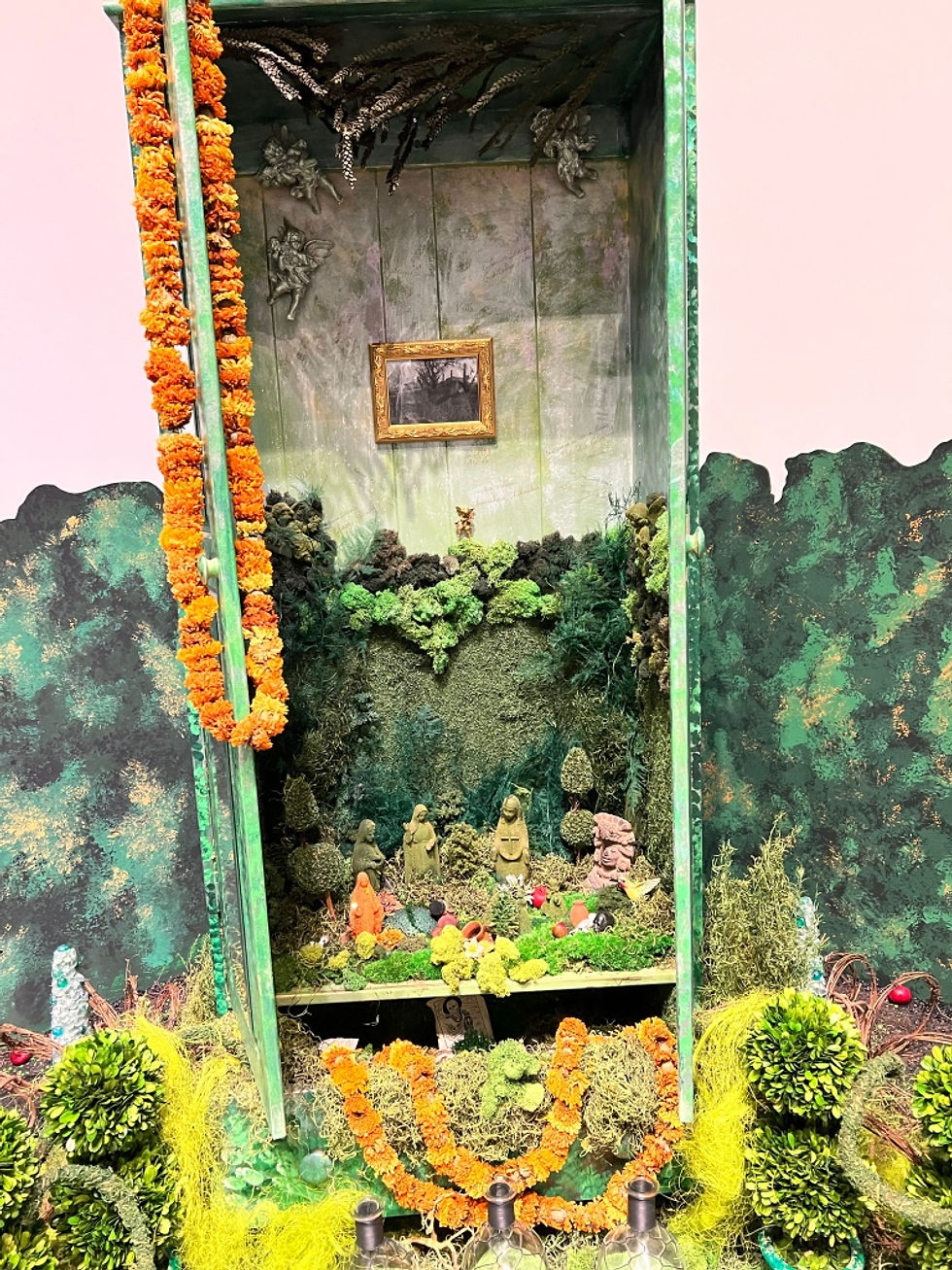Art Exploration or Archeologies with Kehinde Wiley and Amalisa Mesa-Bains
- nekbone69
- Jul 19, 2023
- 3 min read
Sunday morning, I went to the DeYoung Museum to visit the Kehinde Wiley exhibit. I had to agree with my Lyft driver and said: “Its not a decision a lot of people would make. Going to a museum first thing on a Sunday.” She agreed, but we were both wrong. The gallery of Kehinde’s work, entitled Archeology of Silence, allowed me to leisurely explore and stare, but the gallery full of Ansel Adams photographs stayed haunted with shadows all day.

Kehinde Wiley on view at the DeYoung
I admired his work since first hearing of him, but experiencing it in person for the first time was overwhelming. Everything is larger than expected, larger than life itself, yet forged with sharp observant detail. From fingernails to moustache, from shoestring to the waves of fabric on jeans or a shirt. His bronze sculptures of men and women, posed after ancient classical Greco-Roman statuary, appear asleep or freshly dead. Yet their skin is supple, glowing from the sun. The figures could awaken spontaneously and I wouldn’t have been surprised.
The gallery was kept dark as if comforting the figures, enabling privacy while they rested, or to make room for grief if seeing the figures as dead. They appear laid out for sacrifice, but to what? Either way, they are all surrounded by life: multiple flowers swirl with brilliant, cartoony colors– blasting from the background, while vines snake in and around the figures in soft chains. Their physical forms appear empty shells waiting to be reclaimed by the environment, hinting that perhaps in death we break out in color, spirit being a kind of blossom.

K. Wiley statue at the DeYoung
I stood with one huge bronze statue and a man walks past with his daughter. “This is all sponsored by Nike,” he observed while gently pulling his daughter forward. “Look, this one is wearing Adidas. I’ll have to get you a pair.”
Hearing him I felt awful, felt him somehow missing the point even if he’d claim to ‘still see it’ and that he was ‘just talking with his child’. In death or repose, the black body is a model and mascot. But perhaps the vibrancy of the work is a distraction. To stay with the beauty of how the body, the skin and environment is rendered is to perhaps miss what any of this means.
Nonetheless. The gallery downstairs full of Ansel Adams work was practically a cocktail party, full of zombied photography fans, admirers, worshippers of Yosemite or the photographer or both. The crowd seemed present for Adams only, with no crowds loitering before other names. It felt exhausting, the gallery and its sycophants.
I left the DeYoung for Berkeley and, despite the thrill of Kehinde’s work, found Berkeley’s Museum much more exciting and vibrant. Amalisa Mesa-Bains ‘Archeology of Memory’ was a visually tactile stunner full of art one can feel with their lives, I mean eyes. The collages and ideas presented were richly detailed and moving. A mournful sense of memory creeped into me, as if I explored her installation of found objects. So detailed and specific, some installations felt like walking into a newly vacated room of someone who died. As if these mixed media cabinets and tablescapes were curations representing entire lives.

Installation at BAMPFA of Amalia Mesa-Bains work
I was at BAMPFA mostly to read in support of Jewelle Gomez, who was in receipt of a lifetime achievement award and proclamation dedicating a day to her. I was asked to read as her opening act alongside poet, Teya Schaffer. A beautiful event for a long deserving writer. I asked her to sign my copy of her classic novel, The Gilda Stories.
I was incredibly full from such a long and beautiful day and felt tired of talking and seeing. But there was so much beauty to see and reading poems in dedication to Jewelle was lovely.


Comments